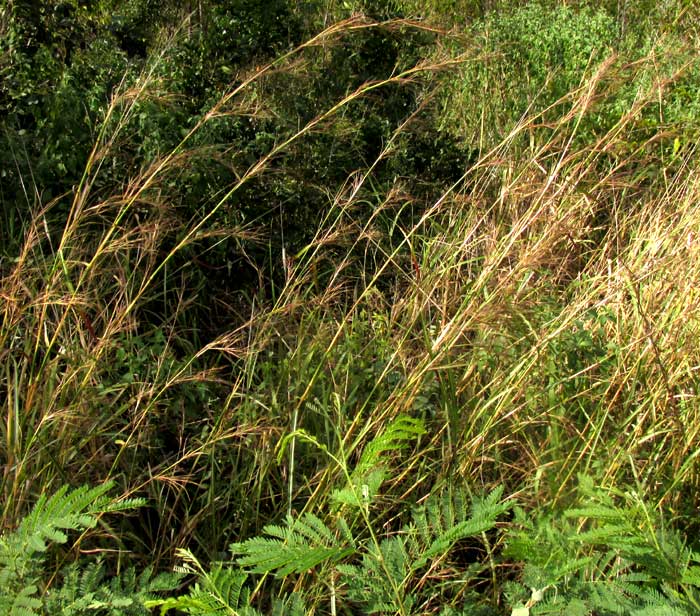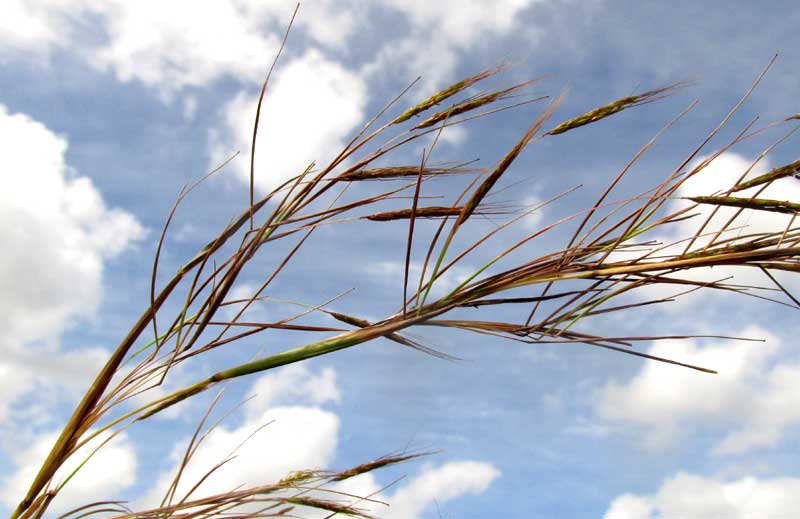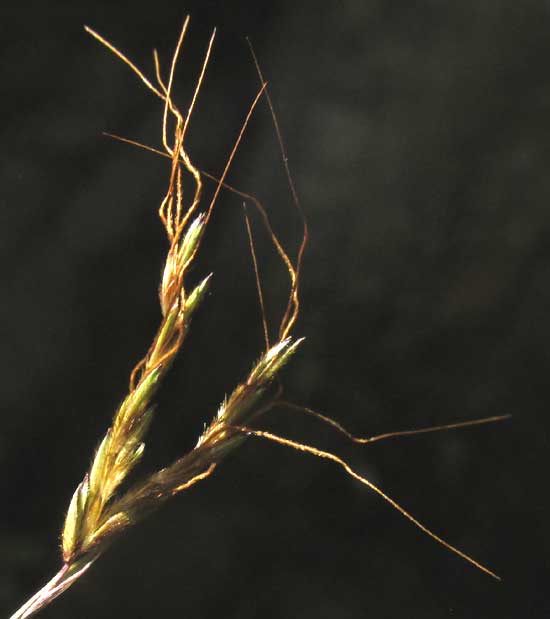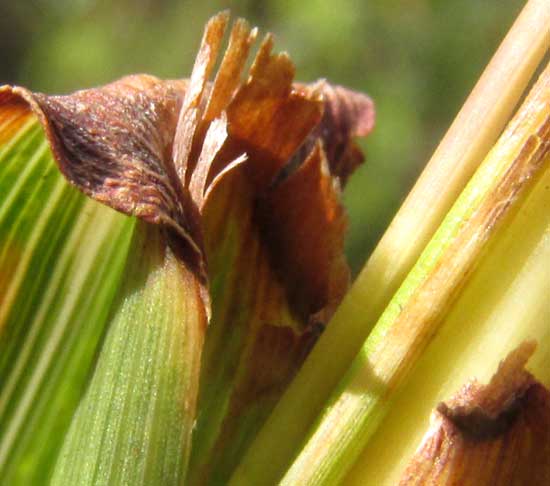Excerpts from Jim Conrad's
Naturalist Newsletter
from the December 28, 2018 Newsletter issued from Rancho Regensis north of Valladolid, Yucatán, MÉXICO;
elevation ~40m (~130 ft), N~20.876°, W~88.170°
BLUESTEM/ BEARD GRASS FLOWERING
Along the paved entry road to the village of Ek Balam a 7ft-tall (2m) clump of grass leaned with the wind, as shown below:

All along the road the species appeared only spottily, but among the little ranches and abandoned cornfields just north of Santa Rita maybe four kilometers away, late I found it to be much more common. One field was so thick with it that it seemed to have been sowed, and maybe it was, as forage, because in one place the rancher had cut an armload of stems and leaves, maybe to carry home for the cow.
The grass looked like one of the bluestems or beard grasses so abundant in North America's dry prairie regions. In the eastern US, the best known of this group is the one known as Broomsedge, which is a yard-high, clump-forming grass that colonizes abandoned fields, indicating poor soil. In late fall and early winter it lends large patches of the landscape a warm, reddish-brown hue. Expecting a challenge in determining the species, I set about photographing its main field marks. Below, you can see the flowering top of one grass:

Up closer, you see how the tips of each of the numerous peduncles bear two finger-long items technically called "short paracladia subzones," as shown below:

Even closer, below we see other details of the spikelets

And as close as my camera will go, you can see that the spikelets occur in pairs, one on a hairy stem or pedicel, the other without a stem (sessile), as seen below:

Finally, when identifying grasses, it's always a good to notice the ligules at each blade's base, where it meets the grass stem, and that's shown below:

Using images of herbarium specimens and descriptions on the Internet, the best I can determine is that this is ANDROPOGON FASTIGIATUS, with no particular English name. Though little documented in the Yucatan, it's very broadly distributed throughout much of tropical Africa, Asia, on Pacific islands, and from Mexico and the Caribbean south through Central America to Brazil in South America.
Because of the few reports of its presence here, I suspect that our plants constitute a small island population resulting from someone sowing the species, or maybe bringing in seed-carrying hay from someplace else. Judging from how it seems to spread easily from field to field and along the road, probably it'll be common throughout the Yucatan before long.